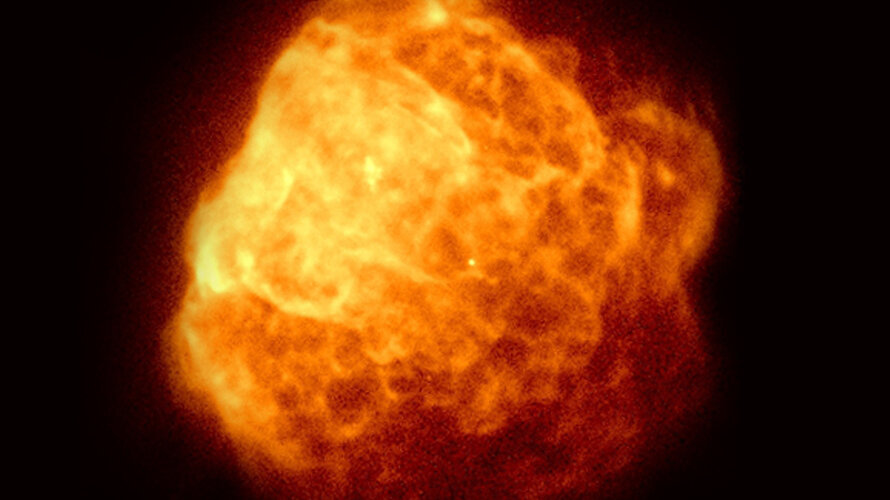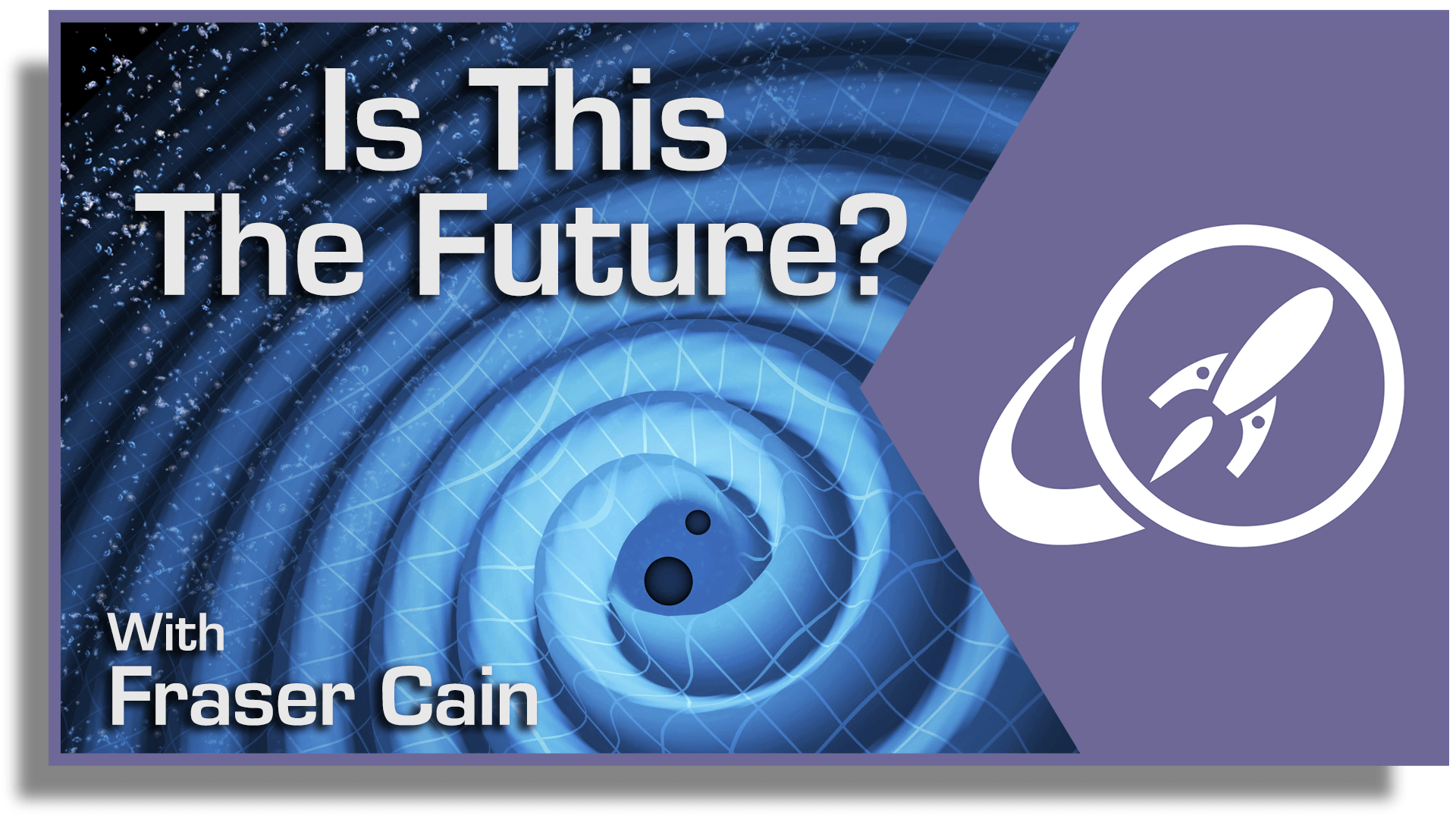Gravitational lensing is a concept where dark matter distorts space revealing its presence through its interaction with light. ESA’s Euclid mission is mapping out the gravitational lensing events to chart the large scale structure of the Universe. Euclid is also expected to discover in excess of 170,000 strong gravitational lensing features too. AI is expected to help achieve this goal but machine learning is still in its infancy so human beings are likely to have to confirm each lens candidate.
Continue reading “Euclid Could Find 170,000 Strong Gravitational Lenses”Black Holes: Why study them? What makes them so fascinating?
Over the last few months, Universe Today has explored a plethora of scientific fields, including impact craters, planetary surfaces, exoplanets, astrobiology, solar physics, comets, planetary atmospheres, planetary geophysics, cosmochemistry, meteorites, radio astronomy, extremophiles, and organic chemistry, and how these various disciplines help scientists and the public better understand our place in the cosmos.
Continue reading “Black Holes: Why study them? What makes them so fascinating?”First Light from Einstein Probe: A Supernova Remnant
On 9 January 2024, the Einstein probe was launched, its mission to study the night sky in X-rays. The first image from the probe that explores the Universe in these energetic wavelengths has just been released. It shows Puppis A, the supernova remnant from a massive star that exploded 4,000 years ago. The image showed the expanding cloud of ejecta from the explosion but now, Einstein will continue to scan the skies for other X-ray events.
Continue reading “First Light from Einstein Probe: A Supernova Remnant”NASA’s Roman Mission Might Tell Us if the Universe Will Tear Itself Apart in the Future
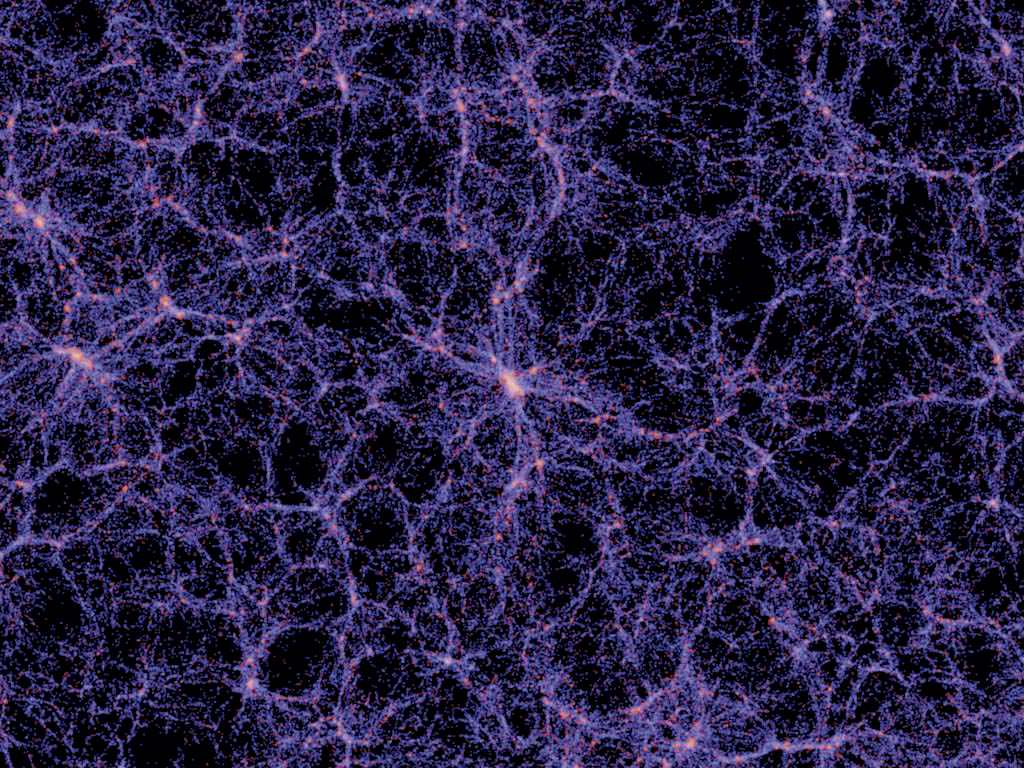
NASA’s Nancy Gracy Roman Space Telescope won’t launch until 2027, and it won’t start operating until some time after that. But that isn’t stopping excited scientists from dreaming about their new toy and all it will do. Who can blame them?
A new study examines the Roman Space Telescope’s power in detail to see if it can help us answer one of our most significant questions about the Universe. The question?
Will the Universe keep expanding and tear itself apart in a Big Rip?
Continue reading “NASA’s Roman Mission Might Tell Us if the Universe Will Tear Itself Apart in the Future”What is Einstein’s Theory of Relativity?
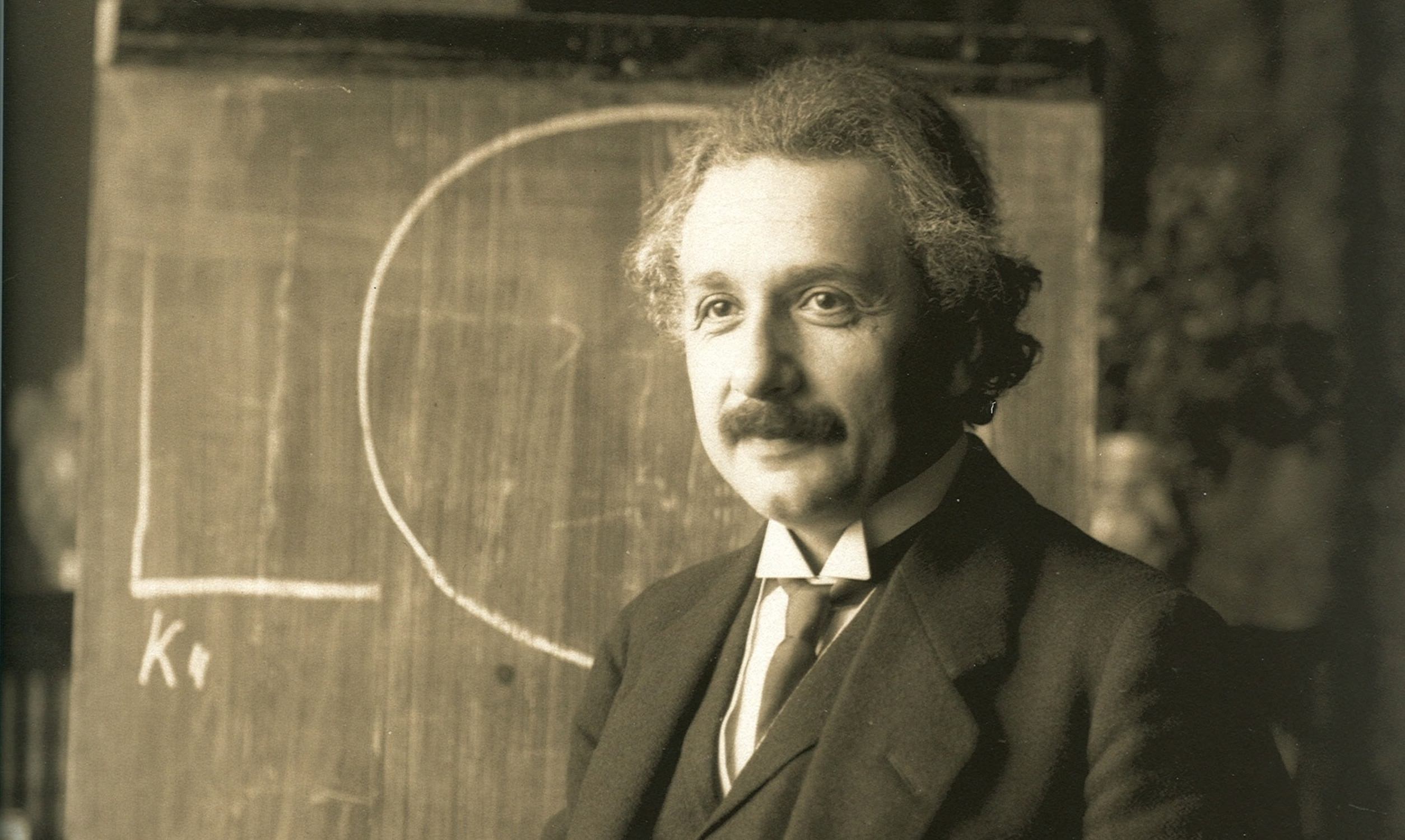
In the history of science and physics, several scholars, theories, and equations have become household names. In terms of scientists, notable examples include Pythagoras, Aristotle, Galileo, Newton, Planck, and Hawking. In terms of theories, there’s Archimede’s “Eureka,” Newton’s Apple (Universal Gravitation), and Schrodinger’s Cat (quantum mechanics). But the most famous and renowned is arguably Albert Einstein, Relativity, and the famous equation, E=mc2. In fact, Relativity may be the best-known scientific concept that few people truly understand.
For example, Einstein’s Theory of Relativity comes in two parts: the Special Theory of Relativity (SR and the General Theory of Relativity (GR). And the term “Relativity” itself goes back to Galileo Galilee and his explanation for why motion and velocity are relative to the observer. As you can probably tell, explaining how Einstein’s groundbreaking theory works require a deep dive into the history of physics, some advanced concepts, and how it all came together for one of the greatest minds of all time!
Continue reading “What is Einstein’s Theory of Relativity?”Gravitational Astronomy? How Detecting Gravitational Waves Changes Everything
Just a couple of weeks ago, astronomers from Caltech announced their third detection of gravitational waves from the Laser Interferometer Gravitational-Wave Observatory or LIGO.
As with the previous two detections, astronomers have determined that the waves were generated when two intermediate-mass black holes slammed into each other, sending out ripples of distorted spacetime.
One black hole had 31.2 times the mass of the Sun, while the other had 19.4 solar masses. The two spiraled inward towards each other, until they merged into a single black hole with 48.7 solar masses. And if you do the math, twice the mass of the Sun was converted into gravitational waves as the black holes merged.
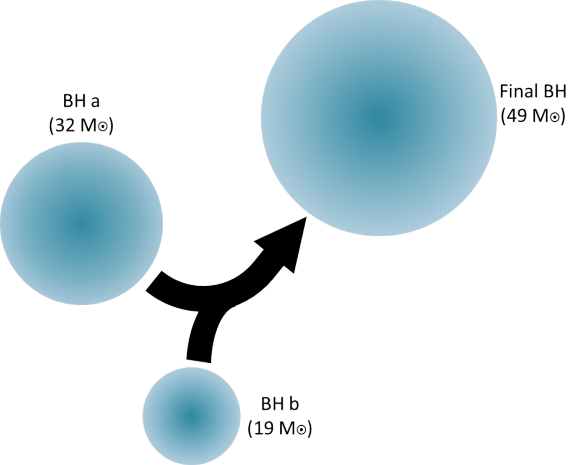
These gravitational waves traveled outward from the colossal collision at the speed of light, stretching and compressing spacetime like a tsunami wave crossing the ocean until they reached Earth, located about 2.9 billion light-years away.
The waves swept past each of the two LIGO facilities, located in different parts of the United States, stretching the length of carefully calibrated laser measurements. And from this, researchers were able to detect the direction, distance and strength of the original merger.
Seriously, if this isn’t one of the coolest things you’ve ever heard, I’m clearly easily impressed.
Now that the third detection has been made, I think it’s safe to say we’re entering a brand new field of gravitational astronomy. In the coming decades, astronomers will use gravitational waves to peer into regions they could never see before.
Being able to perceive gravitational waves is like getting a whole new sense. It’s like having eyes and then suddenly getting the ability to perceive sound.
This whole new science will take decades to unlock, and we’re just getting started.
As Einstein predicted, any mass moving through space generates ripples in spacetime. When you’re just walking along, you’re actually generating tiny ripples. If you can detect these ripples, you can work backwards to figure out what size of mass made the ripples, what direction it was moving, etc.
Even in places that you couldn’t see in any other way. Let me give you a couple of examples.
Black holes, obviously, are the low hanging fruit. When they’re not actively feeding, they’re completely invisible, only detectable by how they gravitational attract objects or bend light from objects passing behind them.
But seen in gravitational waves, they’re like ships moving across the ocean, leaving ripples of distorted spacetime behind them.
With our current capabilities through LIGO, astronomers can only detect the most massive objects moving at a significant portion of the speed of light. A regular black hole merger doesn’t do the trick – there’s not enough mass. Even a supermassive black hole merger isn’t detectable yet because these mergers seem to happen too slowly.
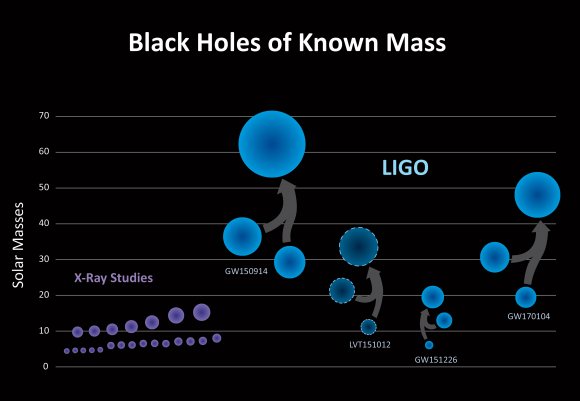
This is why all the detections so far have been intermediate-mass black holes with dozens of times the mass of our Sun. And we can only detect them at the moment that they’re merging together, when they’re generating the most intense gravitational waves.
If we can boost the sensitivity of our gravitational wave detectors, we should be able to spot mergers of less and more massive black holes.
But merging isn’t the only thing they do. Black holes are born when stars with many more times the mass of our Sun collapse in on themselves and explode as supernovae. Some stars, we’ve now learned just implode as black holes, never generating the supernovae, so this process happens entirely hidden from us.
Is there a singularity at the center of a black hole event horizon, or is there something there, some kind of object smaller than a neutron star, but bigger than an infinitely small point? As black holes merge together, we could see beyond the event horizon with gravitational waves, mapping out the invisible region within to get a sense of what’s going on down there.
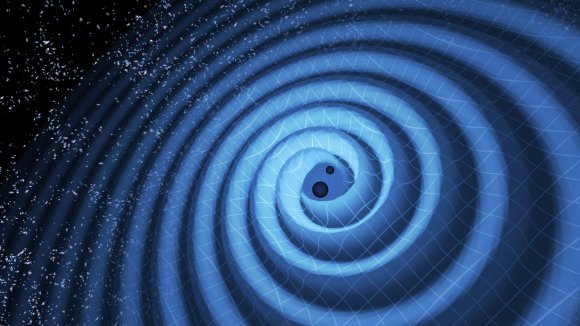
We want to know about even less massive objects like neutron stars, which can also form from a supernova explosion. These neutron stars can orbit one another and merge generating some of the most powerful explosions in the Universe: gamma ray bursts. But do neutron stars have surface features? Different densities? Could we detect a wobble in the gravitational waves in the last moments before a merger?
And not everything needs to merge. Sensitive gravitational wave detectors could sense binary objects with a large imbalance, like a black hole or neutron star orbiting around a main sequence star. We could detect future mergers by their gravitational waves.
Are gravitational waves a momentary distortion of spacetime, or do they leave some kind of permanent dent on the Universe that we could trace back? Will we see echoes of gravity from gravitational waves reflecting and refracting through the fabric of the cosmos?
Perhaps the greatest challenge will be using gravitational waves to see beyond the Cosmic Microwave Background Radiation. This region shows us the Universe 380,000 years after the Big Bang, when everything was cool enough for light to move freely through the Universe.
But there was mass there, before that moment. Moving, merging mass that would have generated gravitational waves. As we explained in a previous article, astronomers are working to find the imprint of these gravitational waves on the Cosmic Microwave Background, like an echo, or a shadow. Perhaps there’s a deeper Cosmic Gravitational Background Radiation out there, one which will let us see right to the beginning of time, just moments after the Big Bang.
And as always, there will be the surprises. The discoveries in this new field that nobody ever saw coming. The “that’s funny” moments that take researchers down into whole new fields of discovery, and new insights into how the Universe works.
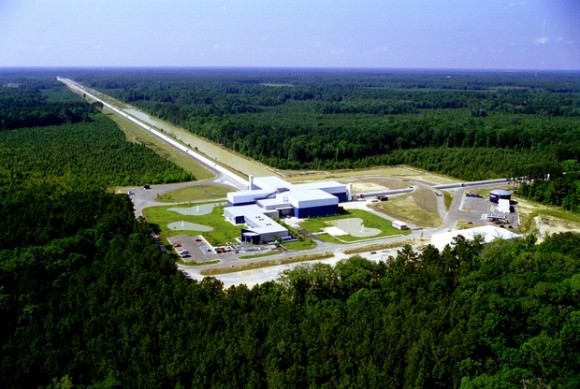
The LIGO project was begun back in 1994, and the first iteration operated from 2002 to 2012 without a single gravitational wave detection. It was clear that the facility wasn’t sensitive enough, so researchers went back and made massive improvements.
In 2008, they started improving the facility, and in 2015, Advanced LIGO came online with much more sensitivity. With the increased capabilities, Advanced LIGO made its first discovery in 2016, and now two more discoveries have been added.
LIGO can currently only detect the general hemisphere of the sky where a gravitational wave was emitted. And so, LIGO’s next improvement will be to add another facility in India, called INDIGO. In addition to improving the sensitivity of LIGO, this will give astronomers three observations of each event, to precisely detect the origin of the gravitational waves. Then visual astronomers could do follow up observations, to map the event to anything in other wavelengths.
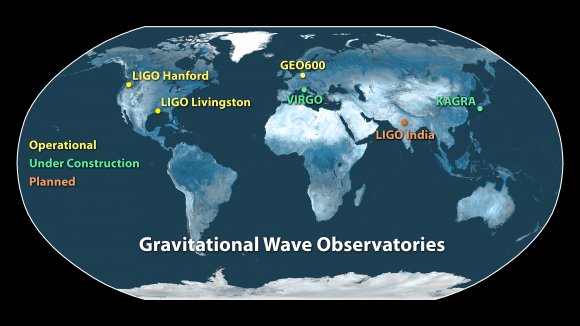
A European experiment known as Virgo has been operating for a few years as well, agreeing to collaborate with the LIGO team if any detections are made. So far, the Virgo experiment hasn’t found anything, but it’s being upgraded with 10 times the sensitivity, which should be fully operational by 2018.
A Japanese experiment called the Kamioka Gravitational Wave Detector, or KAGRA, will come online in 2018 as well, and be able to contribute to the observations. It should be capable of detecting binary neutron star mergers out to nearly a billion light-years away.
Just with visual astronomy, there are a set of next generation supergravitational wave telescopes in the works, which should come online in the next few decades.
The Europeans are building the Einstein Telescope, which will have detection arms 10 km long, compared to 4 km for LIGO. That’s like, 6 more km.
There’s the European Space Agency’s space-based Laser Interferometer Space Antenna, or LISA, which could launch in 2030. This will consist of a fleet of 3 spacecraft which will maintain a precise distance of 2.5 million km from each other. Compare that to the Earth-based detection distances, and you can see why the future of observations will come from space.
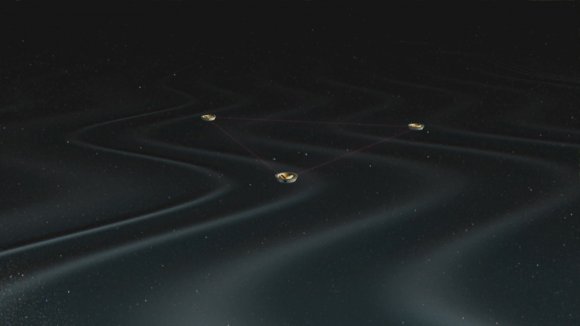
And that last idea, looking right back to the beginning of time could be a possibility with the Big Bang Observer mission, which will have a fleet of 12 spacecraft flying in formation. This is still all in the proposal stage, so no concrete date for if or when they’ll actually fly.
Gravitational wave astronomy is one of the most exciting fields of astronomy. This entirely new sense is pushing out our understanding of the cosmos in entirely new directions, allowing us to see regions we could never even imagine exploring before. I can’t wait to see what happens next.
What Happens When Black Holes Collide?
The sign of a truly great scientific theory is by the outcomes it predicts when you run experiments or perform observations. And one of the greatest theories ever proposed was the concept of Relativity, described by Albert Einstein in the beginning of the 20th century.
In addition to helping us understand that light is the ultimate speed limit of the Universe, Einstein described gravity itself as a warping of spacetime.
He did more than just provide a bunch of elaborate new explanations for the Universe, he proposed a series of tests that could be done to find out if his theories were correct.
One test, for example, completely explained why Mercury’s orbit didn’t match the predictions made by Newton. Other predictions could be tested with the scientific instruments of the day, like measuring time dilation with fast moving clocks.
Since gravity is actually a distortion of spacetime, Einstein predicted that massive objects moving through spacetime should generate ripples, like waves moving through the ocean.
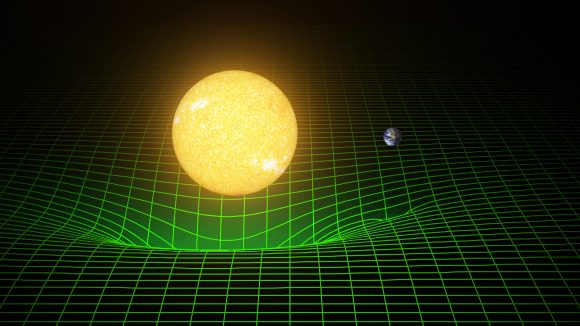
Just by walking around, you leave a wake of gravitational waves that compress and expand space around you. However, these waves are incredibly tiny. Only the most energetic events in the entire Universe can produce waves we can detect.
It took over 100 years to finally be proven true, the direct detection of gravitational waves. In February, 2016, physicists with the Laser Interferometer Gravitational Wave Observatory, or LIGO announced the collision of two massive black holes more than a billion light-years away.
Any size of black hole can collide. Plain old stellar mass black holes or supermassive black holes. Same process, just on a completely different scale.
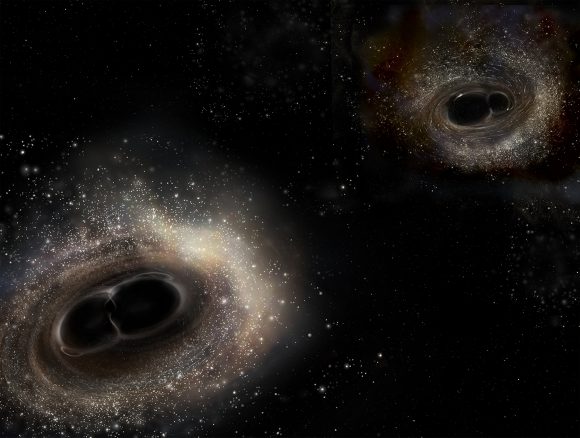
Let’s start with the stellar mass black holes. These, of course, form when a star with many times the mass of our Sun dies in a supernova. Just like regular stars, these massive stars can be in binary systems.
Imagine a stellar nebula where a pair of binary stars form. But unlike the Sun, each of these are monsters with many times the mass of the Sun, putting out thousands of times as much energy. The two stars will orbit one another for just a few million years, and then one will detonate as a supernova. Now you’ll have a massive star orbiting a black hole. And then the second star explodes, and now you have two black holes orbiting around each other.
As the black holes zip around one another, they radiate gravitational waves which causes their orbit to decay. This is kind of mind-bending, actually. The black holes convert their momentum into gravitational waves.
As their angular momentum decreases, they spiral inward until they actually collide. What should be one of the most energetic explosions in the known Universe is completely dark and silent, because nothing can escape a black hole. No radiation, no light, no particles, no screams, nothing. And if you mash two black holes together, you just get a more massive black hole.
The gravitational waves ripple out from this momentous collision like waves through the ocean, and it’s detectable across more than a billion light-years.
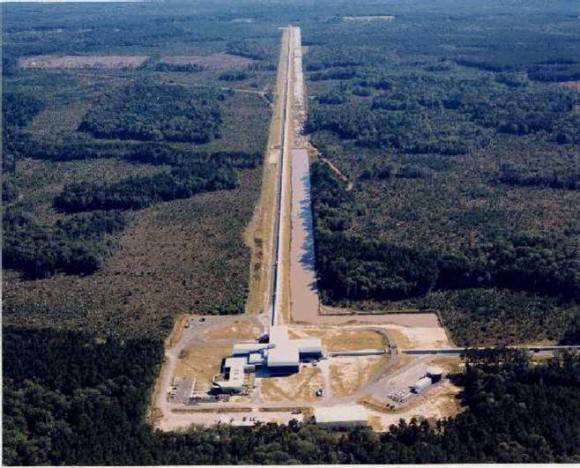
This is exactly what happened earlier this year with the announcement from LIGO. This sensitive instrument detected the gravitational waves generated when two black holes with 30 solar masses collided about 1.3 billion light-years away.
This wasn’t a one-time event either, they detected another collision with two other stellar mass black holes.
Regular stellar mass black holes aren’t the only ones that can collide. Supermassive black holes can collide too.
From what we can tell, there’s a supermassive black hole at the heart of pretty much every galaxy in the Universe. The one in the Milky Way is more than 4.1 million times the mass of the Sun, and the one at the heart of Andromeda is thought to be 110 to 230 million times the mass of the Sun.
In a few billion years, the Milky Way and Andromeda are going to collide, and begin the process of merging together. Unless the Milky Way’s black hole gets kicked off into deep space, the two black holes are going to end up orbiting one another.
Just with the stellar mass black holes, they’re going to radiate away angular momentum in the form of gravitational waves, and spiral closer and closer together. Some point, in the distant future, the two black holes will merge into an even more supermassive black hole.

The Milky Way and Andromeda will merge into Milkdromeda, and over the future billions of years, will continue to gather up new galaxies, extract their black holes and mashing them into the collective.
Black holes can absolutely collide. Einstein predicted the gravitational waves this would generate, and now LIGO has observed them for the first time. As better tools are developed, we should learn more and more about these extreme events.
The 2016 Nobel Prize In Physics: It’s Complicated

Update: This year’s Nobel Prize in Physics has been awarded to David J. Thouless (University of Washington), F. Duncan M. Haldane (Princeton University), and J. Michael Kosterlitz of Brown University for “theoretical discoveries of topological phase transitions and topological phases of matter”. One half of the prize was awarded to Thouless while the other half was jointly awarded to Haldane and Kosterlitz.
The Nobel Prize in physics is a coveted award. Every year, the prize is bestowed upon the individual who is deemed to have made the greatest contribution to the field of physics during the preceding year. And this year, the groundbreaking discovery of gravitational waves is anticipated to be the main focus.
This discovery, which was announced on February 11th, 2016, was made possible thanks to the development of the Laser Interferometer Gravitational-Wave Observatory (LIGO). As such, it is expected that the three scientists that are most responsible for the invention of the technology will receive the Nobel Prize for their work. However, there are those in the scientific community who feel that another scientist – Barry Barish – should also be recognized.
But first, some background is needed to help put all this into perspective. For starers, gravitational waves are ripples in the curvature of spacetime that are generated by certain gravitational interactions and which propagate at the speed of light. The existence of such waves has been postulated since the late 19th century.
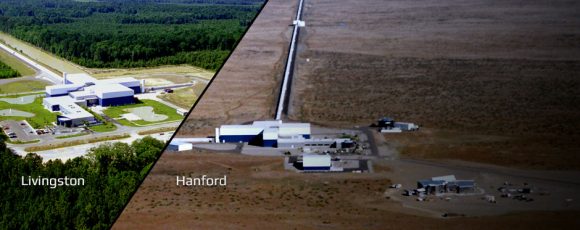
However, it was not until the late 20th century, thanks in large part to Einstein and his theory of General Relativity, that gravitational-wave research began to emerge as a branch of astronomy. Since the 1960s, various gravitational-wave detectors have been built, which includes the LIGO observatory.
Founded as a Caltech/MIT project, LIGO was officially approved by the National Science Board (NSF) in 1984. A decade later, construction began on the facility’s two locations – in Hanford, Washington and Livingston, Louisiana. By 2002, it began to obtain data, and work began on improving its original detectors in 2008 (known as the Advanced LIGO Project).
The credit for the creation of LIGO goes to three scientists, which includes Rainer Weiss, a professor of physics emeritus at the Massachusetts Institute of Technology (MIT); Ronald Drever, an experimental physics who was professor emeritus at the California Institute of Technology and a professor at Glasgow University; and Kip Thorne, the Feynman Professor of Theoretical Physics at Caltech.
In 1967 and 68, Weiss and Thorne initiated efforts to construct prototype detectors, and produced theoretical work to prove that gravitational waves could be successfully analyzed. By the 1970s, using different methods, Weiss and Denver both succeeded in building detectors. In the coming years, all three men remained pivotal and influential, helping to make gravitational astronomy a legitimate field of research.
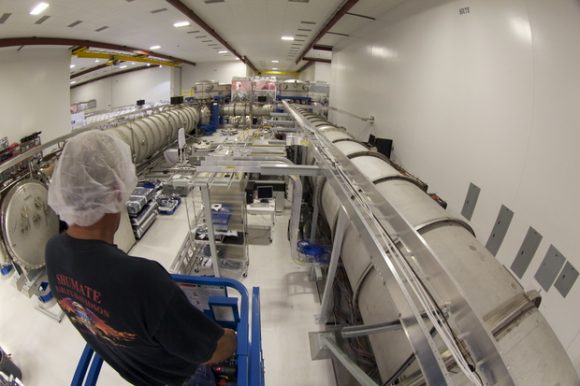
However, it has been argued that without Barish – a particle physicist at Caltech – the discovery would never have been made. Having become the Principal Investigator of LIGO in 1994, he inherited the project at a very crucial time. It had begun funding a decade prior, but coordinating the work of Wiess, Thorne and Drever (from MIT, Caltech and the University of Glasgow, respectively) proved difficult.
As such, it was decided that a single director was needed. Between 1987 and 1994, Rochus Vogt – a professor emeritus of Physics at Caltech – was appointed by the NSF to fill this role. While Vogt brought the initial team together and helped to get the construction of the project approved, he proved difficult when it came to dealing with bureaucracy and documenting his researchers progress.
As such, between 1989 through 1994, LIGO failed to progress technically and organizationally, and had trouble acquiring funding as well. By 1994, Caltech eased Vogt out of his position and appointed Barish to the position of director. Barish got to work quickly, making significant changes to the way LIGO was administered, expanding the research team, and developing a detailed work plan for the NSF.
Barish was also responsible for expanding LIGO beyond its Caltech and MIT constraints. This he did through the creation of the independent LIGO Scientific Collaboration (LSC), which gave access to outside researchers and institutions. This was instrumental in creating crucial partnerships, which included the UK Science and Technology Facilities Council, the Max Planck Society of Germany, and the Australian Research Council.
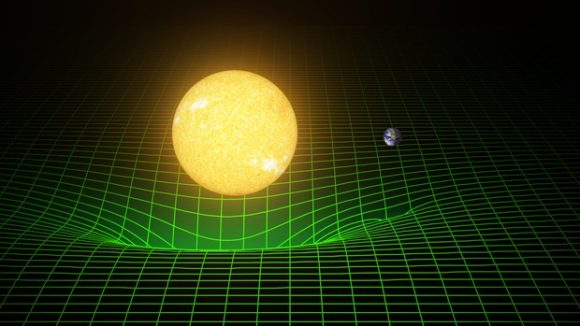
By 1999, construction had wrapped up on the LIGO observatories, and by 2002, they began taking their first bits of data. By 2004, the funding and groundwork was laid for the next phase of LIGO development, which involved a multi-year shut-down while the detectors were replaced with improved “Advanced LIGO” versions.
All of this was made possible by Barish, who retired in 2005 to head up other projects. Thanks to his sweeping reforms, LIGO got to work after an abortive start, began to produce data, procured funding, crucial partnerships, and now has more than 1000 collaborators worldwide, thanks to the LSC program he established.
Little wonder then why some scientists think the Nobel Prize should be split four-ways, awarding the three scientists who conceived of LIGO and the one scientist who made it happen. And as Barish himself was quoted as saying by Science:
“I think there’s a bit of truth that LIGO wouldn’t be here if I didn’t do it, so I don’t think I’m undeserving. If they wait a year and give it to these three guys, at least I’ll feel that they thought about it,” he says. “If they decide [to give it to them] this October, I’ll have more bad feelings because they won’t have done their homework.”
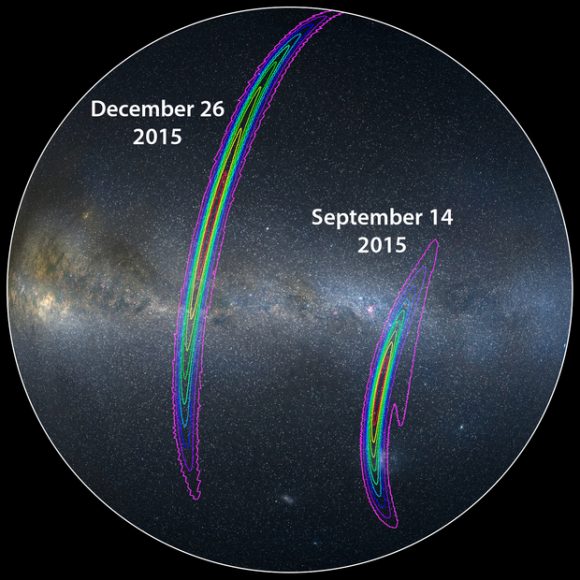
However, there is good reason to believe that the award will ultimately be split three ways, leaving Barish out. For instance, Weiss, Drever, and Thorne have been honored three times already this year for their work on LIGO. This has included the Special Breakthrough Prize in Fundamental Physics, the Gruber Cosmology Prize, and Kavli Prize in Astrophysics.
What’s more, in the past, the Nobel Prize in physics has tended to be awarded to those responsible for the intellectual contributions leading to a major breakthrough, rather than to those who did the leg work. Out of the last six Prizes issued (between 2010 and 2015), five have been awarded for the development of experimental methods, observational studies, and theoretical discoveries.
Only one award was given for a technical development. This was the case in 2014 where the award was given jointly to Isamu Akasaki, Hiroshi Amano and Shuji Nakamura for “the invention of efficient blue light-emitting diodes which has enabled bright and energy-saving white light sources”.
Basically, the Nobel Prize is a complicated matter. Every year, it is awarded to those who made a considerable contribution to science, or were responsible for a major breakthrough. But contributions and breakthroughs are perhaps a bit relative. Whom we choose to honor, and for what, can also be seen as an indication of what is valued most in the scientific community.
In the end, this year’s award may serve to highlight how significant contributions do not just entail the development of new ideas and methods, but also in bringing them to fruition.
Further Reading: Science, LIGO, Nobelprize.org
Second Gravitational Wave Source Found By LIGO
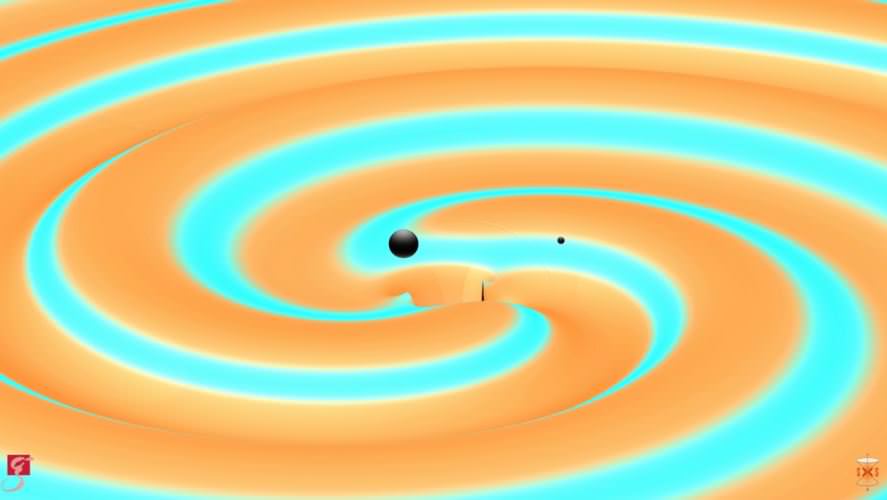
Lightning has struck twice – maybe three times – and scientists from the Laser Interferometer Gravitational-wave Observatory, or LIGO, hope this is just the beginning of a new era of understanding our Universe. This “lightning” came in the form of the elusive, hard-to-detect gravitational waves, produced by gigantic events, such as a pair of black holes colliding. The energy released from such an event disturbs the very fabric of space and time, much like ripples in a pond. Today’s announcement is the second set of gravitational wave ripples detected by LIGO, following the historic first detection announced in February of this year.
“This collision happened 1.5 billion years ago,” said Gabriela Gonzalez of Louisiana State University at a press conference to announce the new detection, “and with this we can tell you the era of gravitational wave astronomy has begun.”
LIGO’s first detection of gravitational waves from merging black holes occurred Sept. 14, 2015 and it confirmed a major prediction of Albert Einstein’s 1915 general theory of relativity. The second detection occurred on Dec. 25, 2015, and was recorded by both of the twin LIGO detectors.
While the first detection of the gravitational waves released by the violent black hole merger was just a little “chirp” that lasted only one-fifth of a second, this second detection was more of a “whoop” that was visible for an entire second in the data. Listen in this video:
“This is what we call gravity’s music,” said González as she played the video at today’s press conference.
While gravitational waves are not sound waves, the researchers converted the gravitational wave’s oscillation and frequency to a sound wave with the same frequency. Why were the two events so different?
From the data, the researchers concluded the second set of gravitational waves were produced during the final moments of the merger of two black holes that were 14 and 8 times the mass of the Sun, and the collision produced a single, more massive spinning black hole 21 times the mass of the Sun. In comparison, the black holes detected in September 2015 were 36 and 29 times the Sun’s mass, merging into a black hole of 62 solar masses.
The scientists said the higher-frequency gravitational waves from the lower-mass black holes hit the LIGO detectors’ “sweet spot” of sensitivity.
“It is very significant that these black holes were much less massive than those observed in the first detection,” said Gonzalez. “Because of their lighter masses compared to the first detection, they spent more time—about one second—in the sensitive band of the detectors. It is a promising start to mapping the populations of black holes in our universe.”
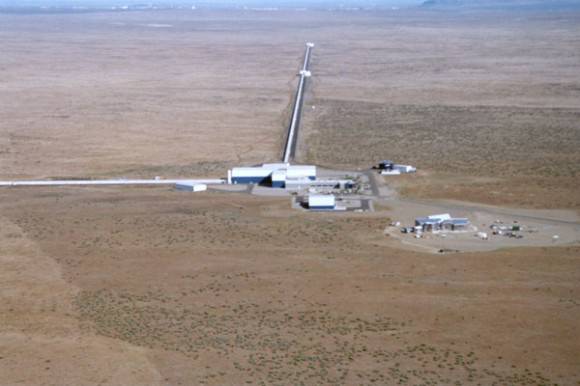
LIGO allows scientists to study the Universe in a new way, using gravity instead of light. LIGO uses lasers to precisely measure the position of mirrors separated from each other by 4 kilometers, about 2.5 miles, at two locations that are over 3,000 km apart, in Livingston, Louisiana, and Hanford, Washington. So, LIGO doesn’t detect the black hole collision event directly, it detects the stretching and compressing of space itself. The detections so far are the result of LIGO’s ability to measure the perturbation of space with an accuracy of 1 part in a thousand billion billion. The signal from the lastest event, named GW151226, was produced by matter being converted into energy, which literally shook spacetime like Jello.
LIGO team member Fulvio Ricci, a physicist at the University of Rome La Sapienzaa said there was a third “candidate” detection of an event in October, which Ricci said he prefers to call a “trigger,” but it was much less significant and the signal to noise not large enough to officially count as a detection.
But still, the team said, the two confirmed detections point to black holes being much more common in the Universe than previously believed, and they might frequently come in pairs.
“The second discovery “has truly put the ‘O’ for Observatory in LIGO,” said Albert Lazzarini, deputy director of the LIGO Laboratory at Caltech. “With detections of two strong events in the four months of our first observing run, we can begin to make predictions about how often we might be hearing gravitational waves in the future. LIGO is bringing us a new way to observe some of the darkest yet most energetic events in our universe.”
LIGO is now offline for improvements. Its next data-taking run will begin this fall and the improvements in detector sensitivity could allow LIGO to reach as much as 1.5 to two times more of the volume of the universe compared with the first run. A third site, the Virgo detector located near Pisa, Italy, with a design similar to the twin LIGO detectors, is expected to come online during the latter half of LIGO’s upcoming observation run. Virgo will improve physicists’ ability to locate the source of each new event, by comparing millisecond-scale differences in the arrival time of incoming gravitational wave signals.
In the meantime, you can help the LIGO team with the Gravity Spy citizen science project through Zooniverse.
Sources for further reading:
Press releases:
University of Maryland
Northwestern University
West Virginia University
Pennsylvania State University
Physical Review Letters: GW151226: Observation of Gravitational Waves from a 22-Solar-Mass Binary Black Hole Coalescence
LIGO facts page, Caltech
For an excellent overview of gravitational waves, their sources, and their detection, check out Markus Possel’s excellent series of articles we featured on UT in February:
Gravitational Waves and How They Distort Space
Gravitational Wave Detectors and How They Work
Sources of Gravitational Waves: The Most Violent Events in the Universe
New ‘Einstein Ring’ Discovered By Dark Energy Camera
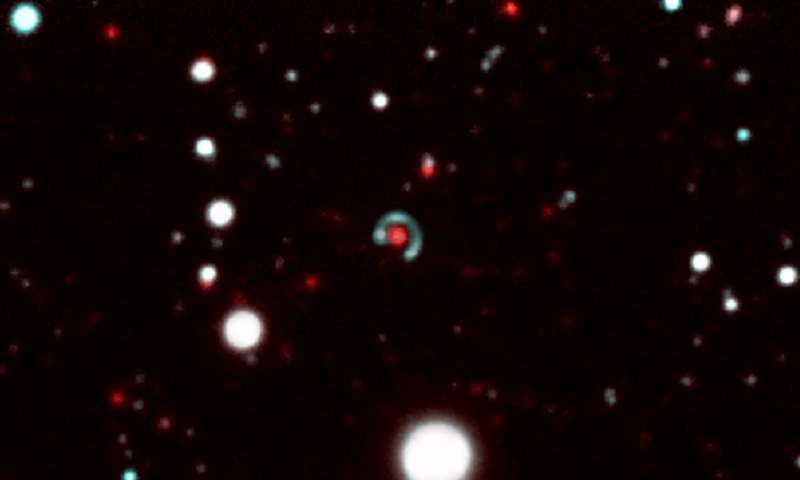
A rare object called an Einstein Ring has been discovered by a team in the Stellar Populations group at the Instituto de Astrofísica de Canarias (IAC) in Spain. An Einstein Ring is a specific type of gravitational lensing.
Einstein’s Theory of General Relativity predicted the phenomena of gravitational lensing. Gravitational lensing tells us that instead of travelling in a straight line, light from a source can be bent by a massive object, like a black hole or a galaxy, which itself bends space time.
Einstein’s General Relativity was published in 1915, but a few years before that, in 1912, Einstein predicted the bending of light. Russian physicist Orest Chwolson was the first to mention the ring effect in scientific literature in 1924, which is why the rings are also called Einstein-Chwolson rings.
Gravitational lensing is fairly well-known, and many gravitational lenses have been observed. Einstein rings are rarer, because the observer, source, and lens all have to be aligned. Einstein himself thought that one would never be observed at all. “Of course, there is no hope of observing this phenomenon directly,” Einstein wrote in 1936.
The team behind the recent discovery was led by PhD student Margherita Bettinelli at the University of La Laguna, and Antonio Aparicio and Sebastian Hidalgo of the Stellar Populations group at the Instituto de Astrofísica de Canarias (IAC) in Spain. Because of the rarity of these objects, and the strong scientific interest in them, this one was given a name: The Canarias Einstein Ring.
There are three components to an Einstein Ring. The first is the observer, which in this case means telescopes here on Earth. The second is the lens galaxy, a massive galaxy with enormous gravity. This gravity warps space-time so that not only are objects drawn to it, but light itself is forced to travel along a curved path. The lens lies between Earth and the third component, the source galaxy. The light from the source galaxy is bent into a ring form by the power of the lens galaxy.
When all three components are aligned precisely, which is very rare, the light from the source galaxy is formed into a circle with the lens galaxy right in the centre. The circle won’t be perfect; it will have irregularities that reflect irregularities in the gravitational force of the lens galaxy.
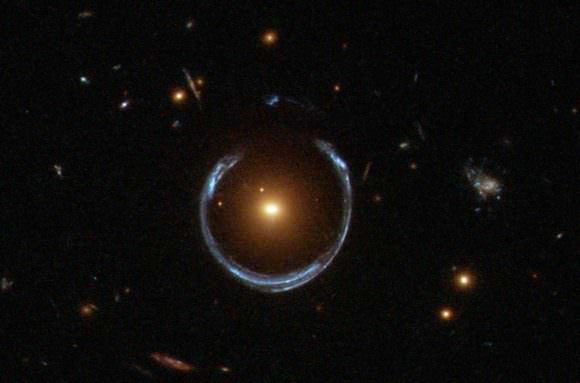
The objects are more than just pretty artifacts of nature. They can tell scientists things about the nature of the lens galaxy. Antonio Aparicio, one of the IAC astrophysicists involved in the research said, “Studying these phenomena gives us especially relevant information about the composition of the source galaxy, and also about the structure of the gravitational field and of the dark matter in the lens galaxy.”
Looking at these objects is like looking back in time, too. The source galaxy is 10 billion light years from Earth. Expansion of the Universe means that the light has taken 8.5 billion light years to reach us. That’s why the ring is blue; that long ago, the source galaxy was young, full of hot blue stars.
The lens itself is much closer to us, but still very distant. It’s 6 billion light years away. Star formation in that galaxy likely came to a halt, and its stellar population is now old.
The discovery of the Canarias Einstein Ring was a happy accident. Bettinelli was pouring over data from what’s known as the Dark Energy Camera (DECam) of the 4m Blanco Telescope at the Cerro Tololo Observatory, in Chile. She was studying the stellar population of the Sculptor dwarf galaxy for her PhD when the Einstein Ring caught her attention. Other members of the Stellar Population Group then used OSIRIS spectrograph on the Gran Telescopio CANARIAS (GTC) to observe and analyze it further.



